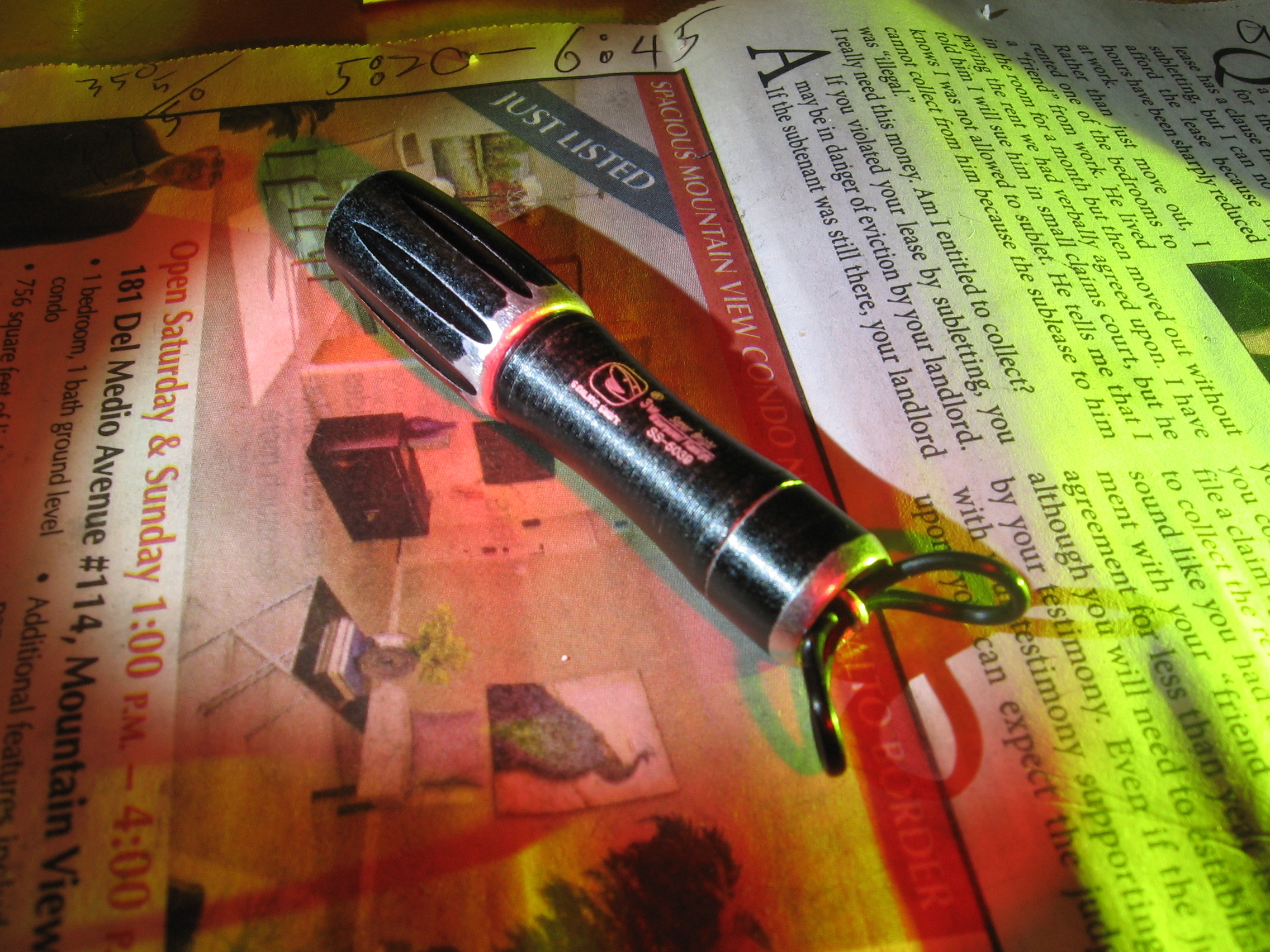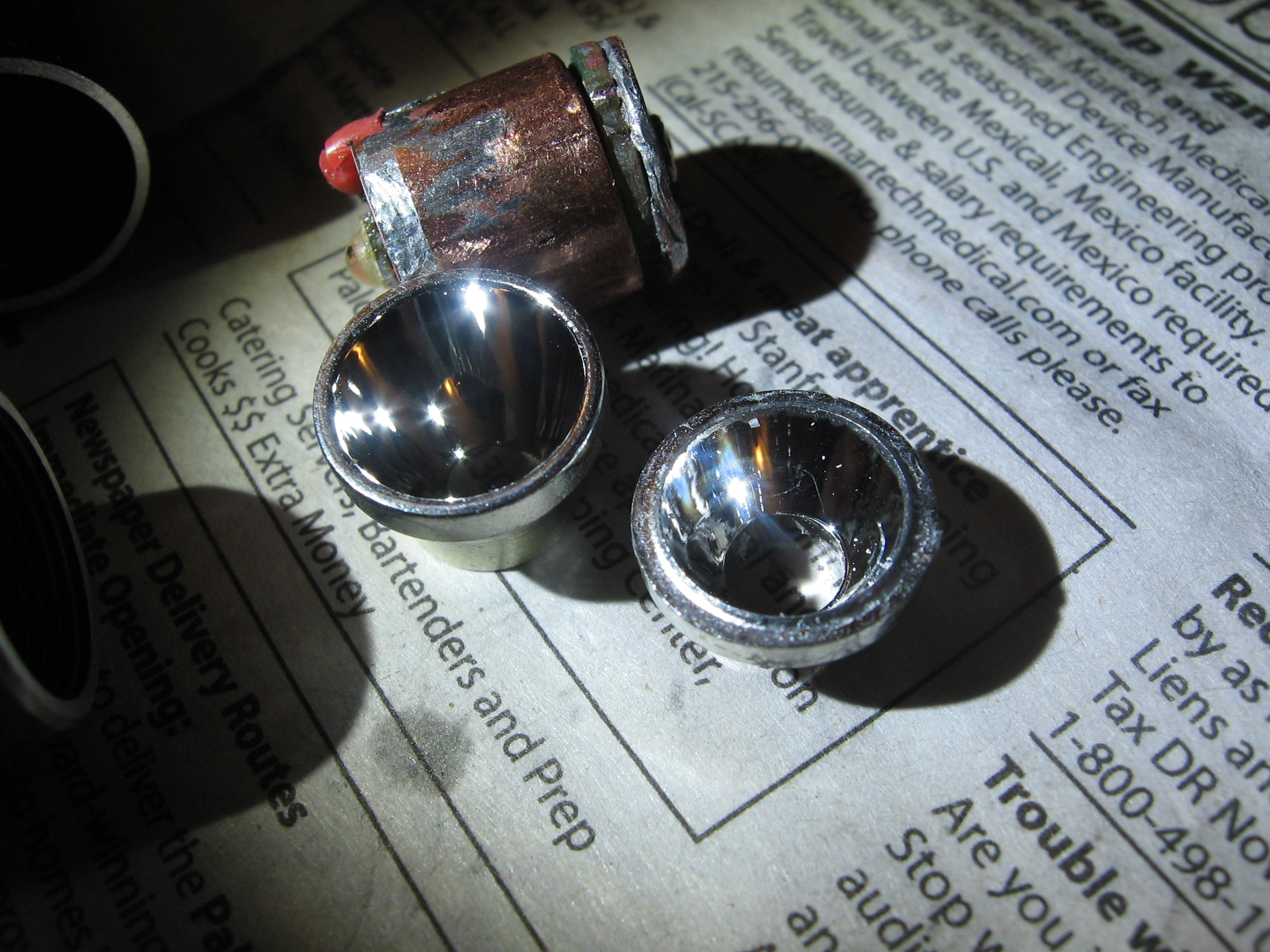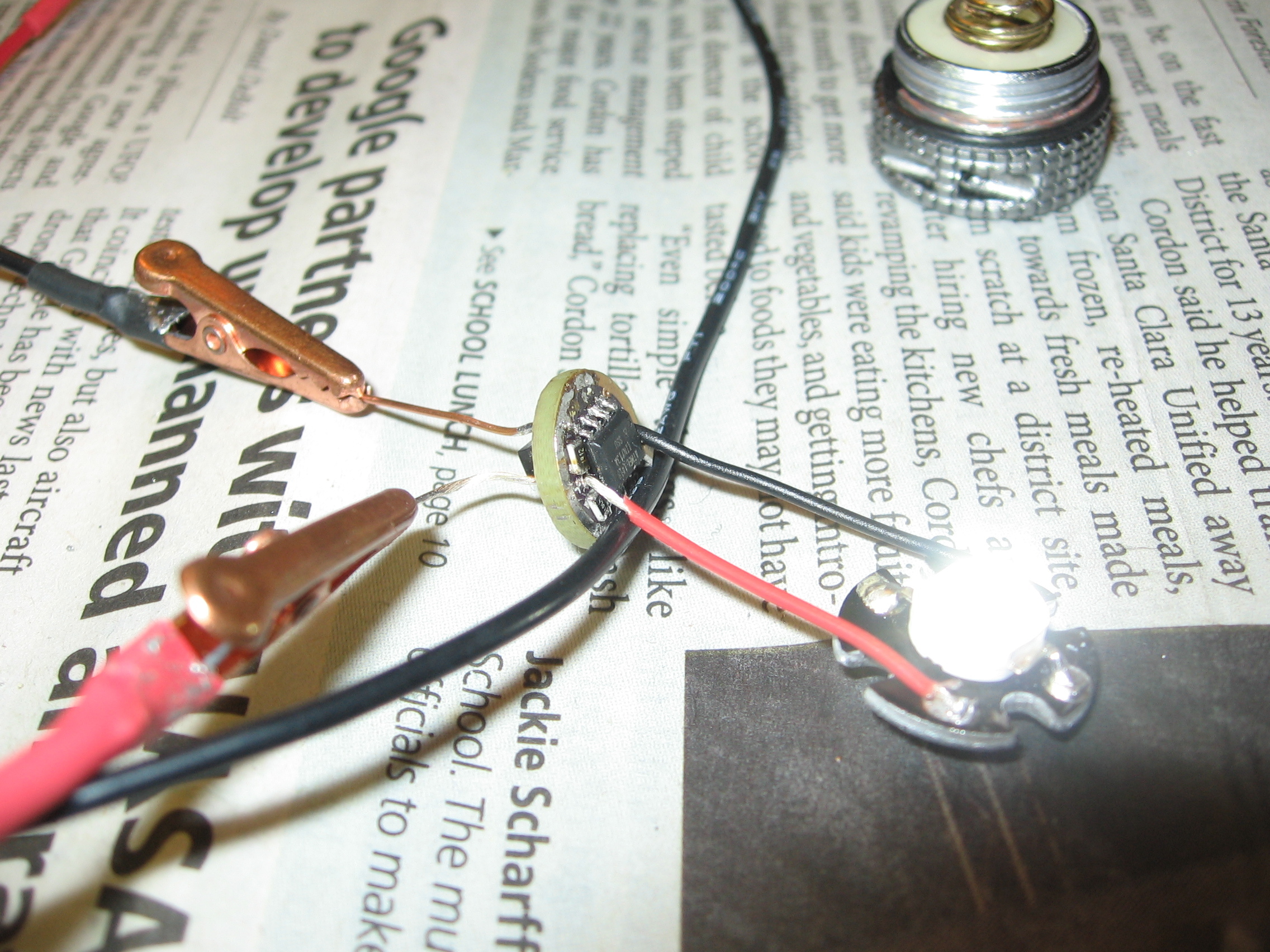The beam looks quite throwy. Sharp hotspot, faint spill. Looks like it belongs to a bigger outdoor type light. How do you intend to use it?
I must have gotten the focus right and it is a small led, but I suppose the accidental dedome also contributes to the throw. I have night hiking in mind but am concerned about mountain lions and regulations. Right now it is in my shirt pocket, in place of the red button cell light I usually carry. The deep red really looks very nice and is best for preserving night vision and for fog or smoke.
I just got a lime and a PC amber Philips Luxeon, but I expect to use them in larger lights. They are broad wave length range but also colored.
After using the short twisty 5039/8 for a few minutes constantly, the plastic reflector has a rough surface near the bottom and stuck to the star.

Does anyone know of a metal reflector that is close to 12 mm. diameter? I suppose I will have to cannibalise an other AAA light to get it.
That shortened the works so it didn’t turn on right. I filed another plastic reflector to focus and fit over the wires, and I am filing a new head to fit. The XP-G2 is not the most heat sensitive part of the light. It has a black dent in its dome but still works well.
I cannibalized a slightly worn Black Cat for the reflector. It is close enough to fit.
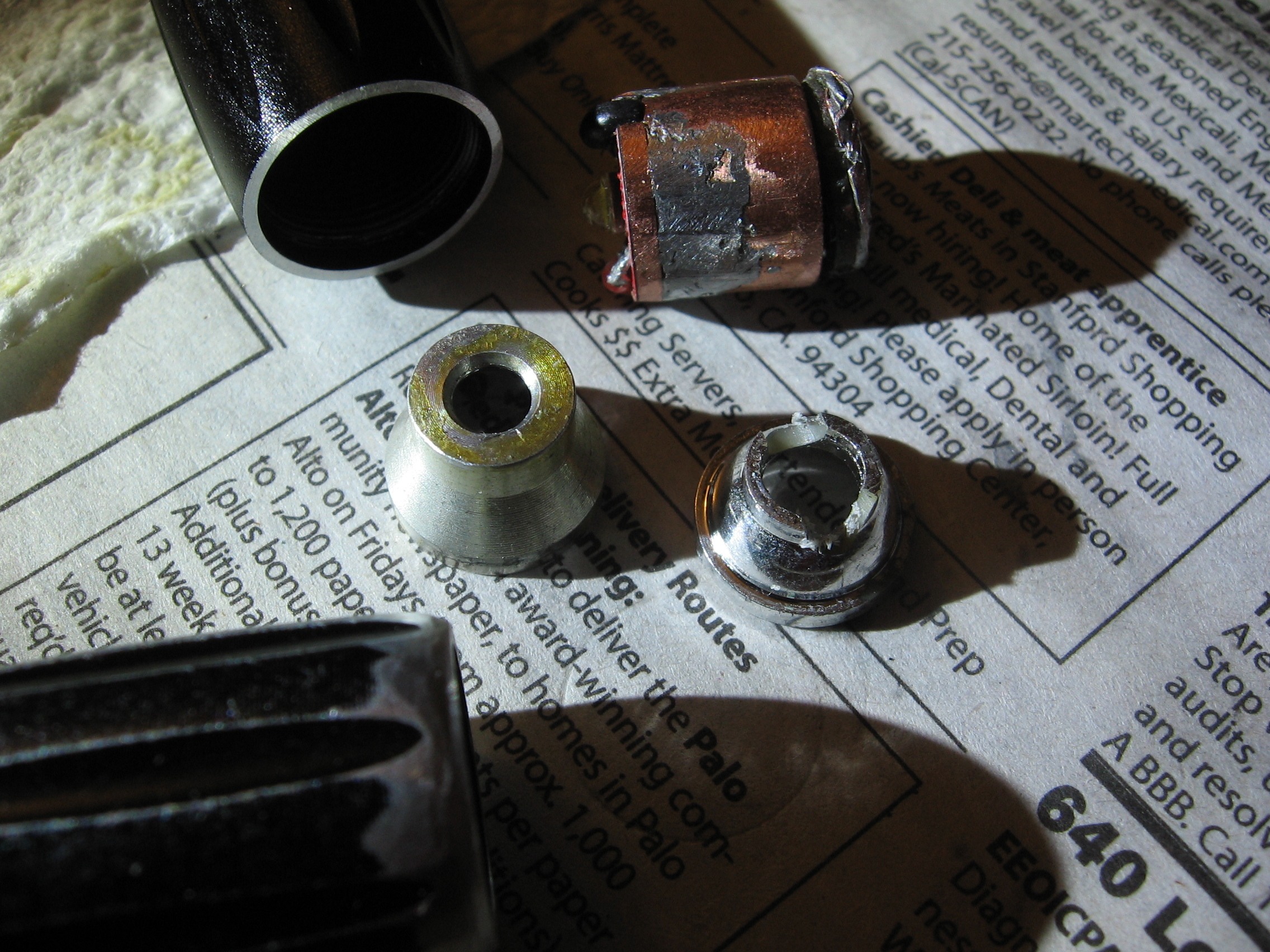
Click for full size.
And I soldered the Noctigon to the copper pipe, which I hadn’t done originally for fear of desoldering the LED, the inner pipe or the wires.

I filed the reflector to fit over the wires without making contact, and over the XP-G2 base. I kept it full length because it looked over focused already.

Put some non-silicone heat sink compound on the bottom of the reflector, inside the head and on the threads between the head and the battery tube.
The Black Cat mirror is longer (shorter focal length), so I used a full length 5039 head.
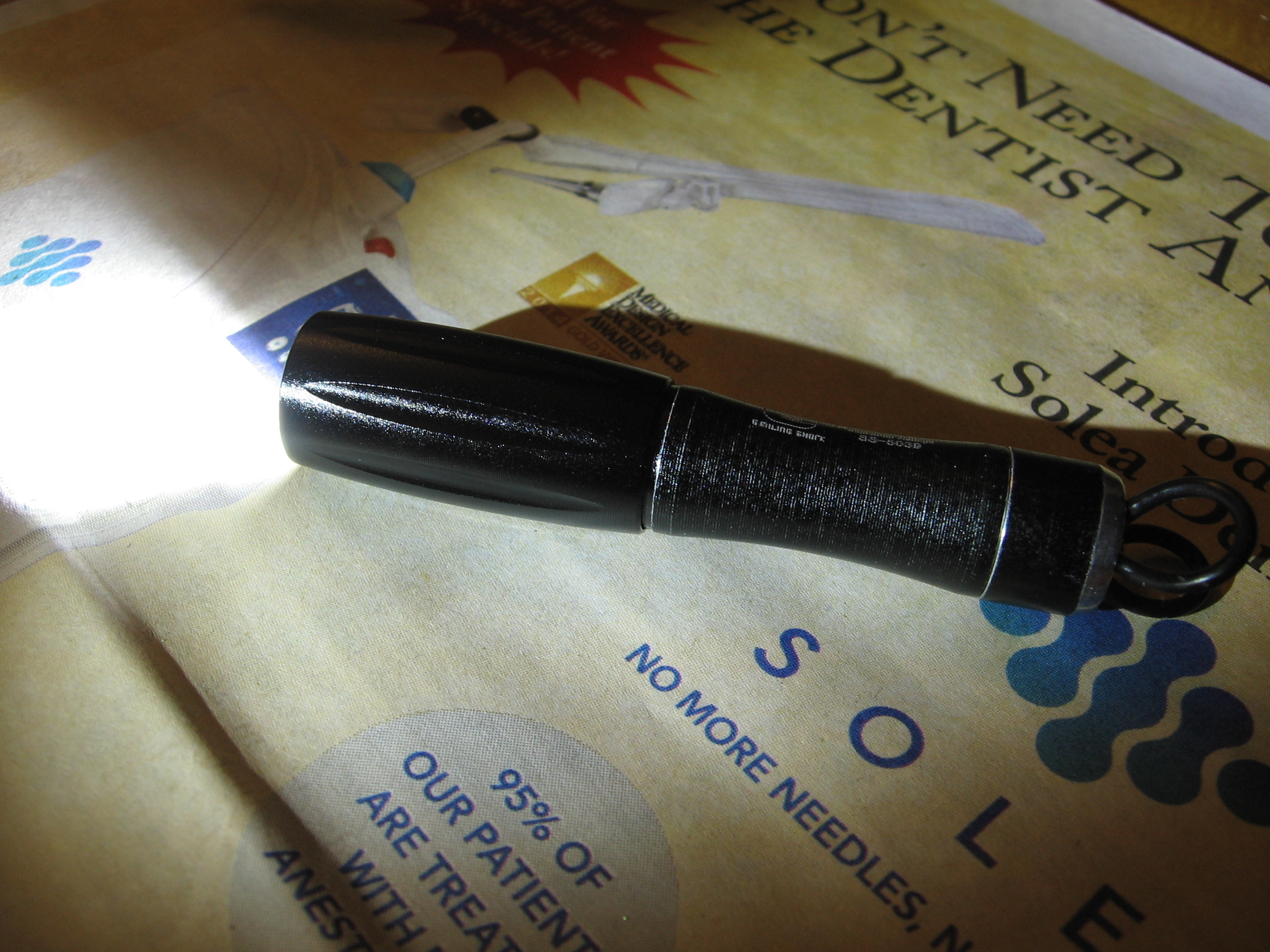
The aluminum reflector not only won’t melt, it gives it cooling comparable to that of more expensive reflector lights, instead of only to zoomies. So I think it is fixed.
I am reading 1.4 A at the tail, and it gets brighter when I short the meter leads together.

Using most of the components from a Nanjg 105c with Two Group program, a BLF Tiny 12 driver board from OSH Park and a Smiling Shark SS-5039, I built a current regulated 10440 cell flashlight. It draws 0.73 A at 4.0 V and 0.72 A at 3.75 V. It has two other steady modes and hidden flashy modes.
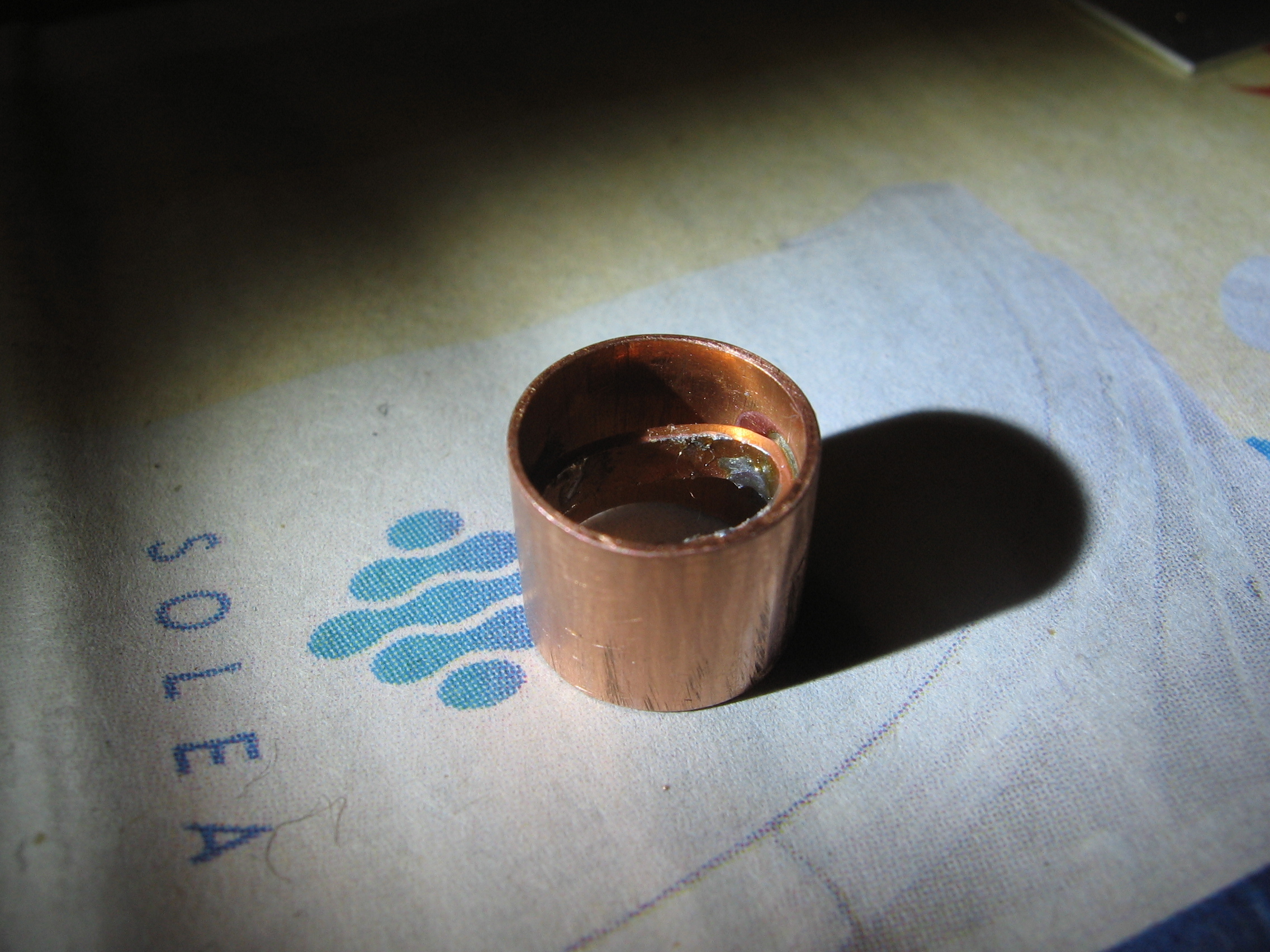
Yes it is crooked, but it works anyway.
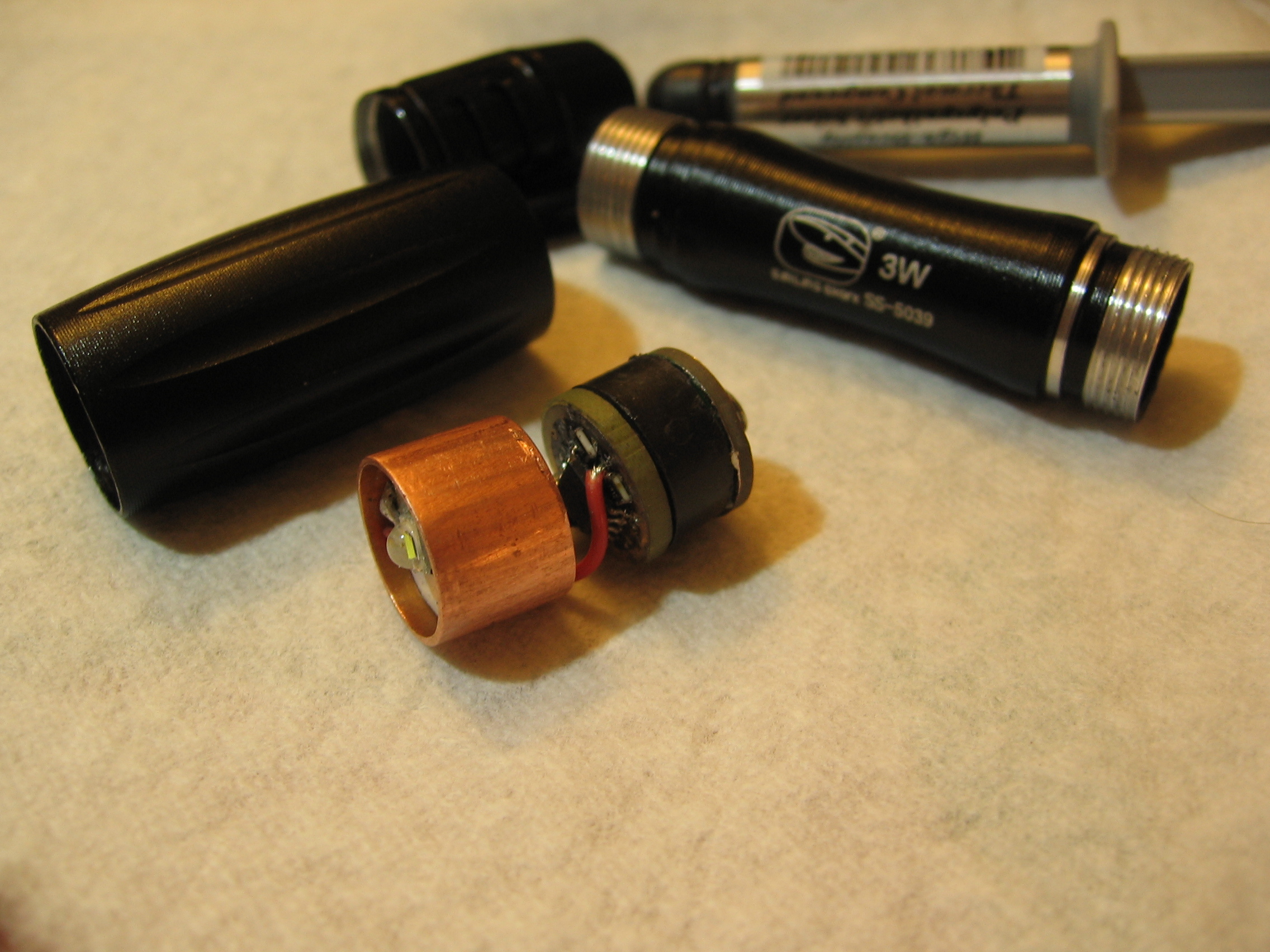
I recovered some length for the copper pipe by setting the star back in the pill, instead of the star contacting the head directly as in previous mods.
The loss in heat transfer length could probably be eliminated, using the smaller BLF Tiny 10 driver.
awesome build!!!
Thanks War!
The three regulator chips stacked, but the board continued to need attention.
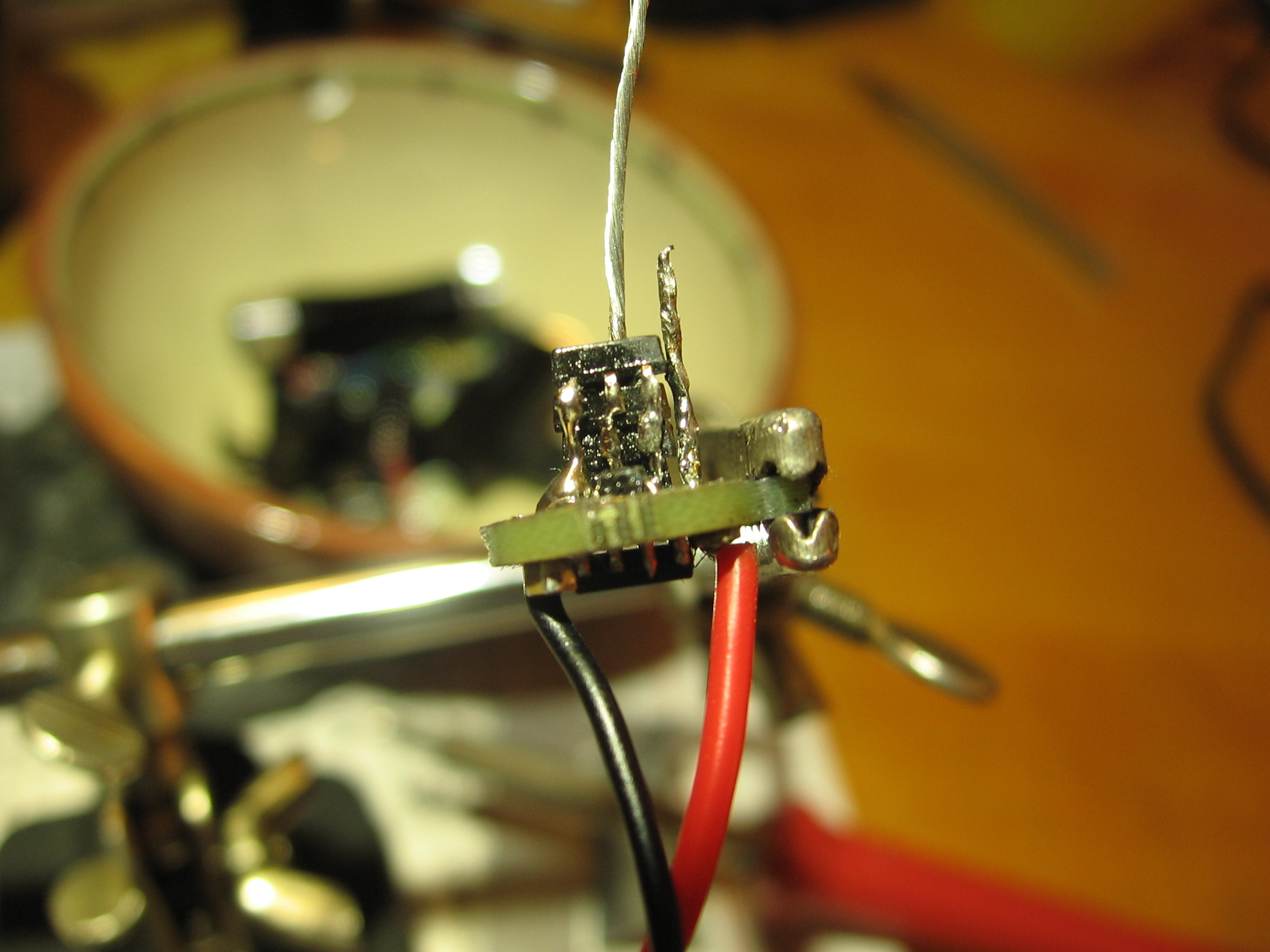
I took the coatings off one copper star. My first plan was to solder the pill and stars together with 99% tin, and then I could have reflowed the LED without disturbing the pill/star. The melting point of tin is too high for this to work.

So I took the coating off the other star and used a regular aluminum star with an XP-G on top of it.
Since it is regulated, I didn’t need the spring to be a resistor.
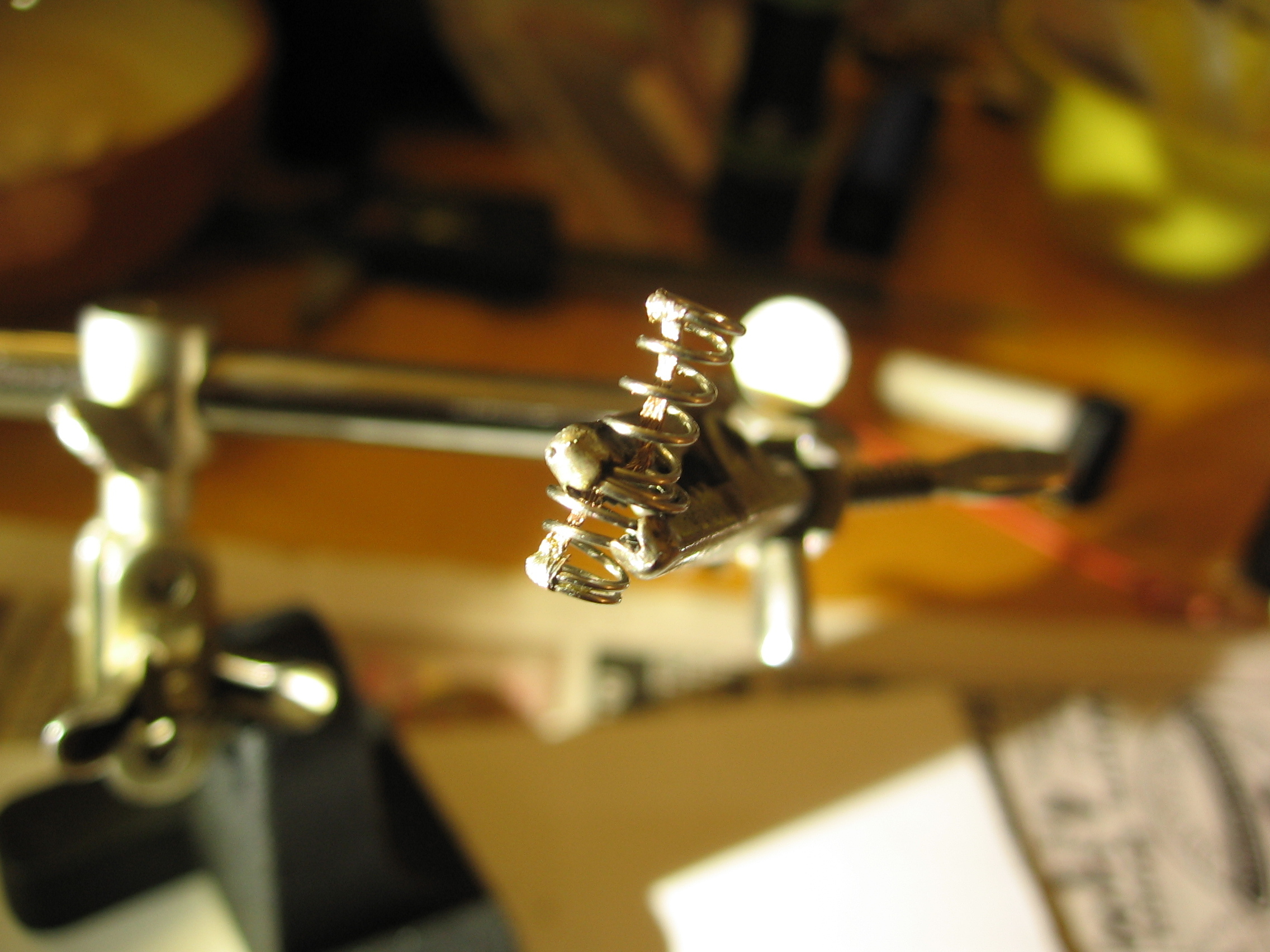
For the connection plate, I use a denuded Nanjg 102 that broke its inductor’s ferrite core on the way from Fasttech.
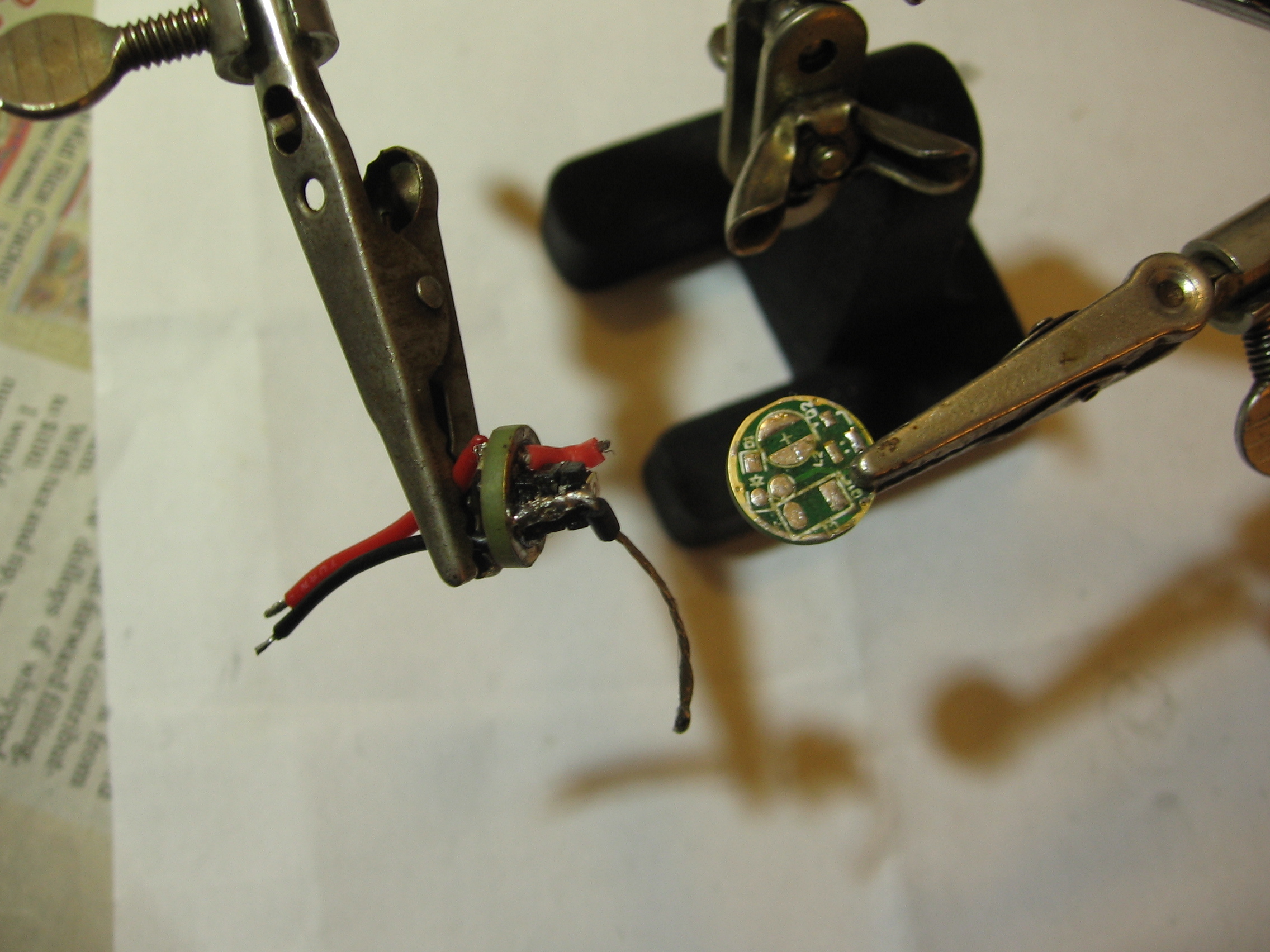
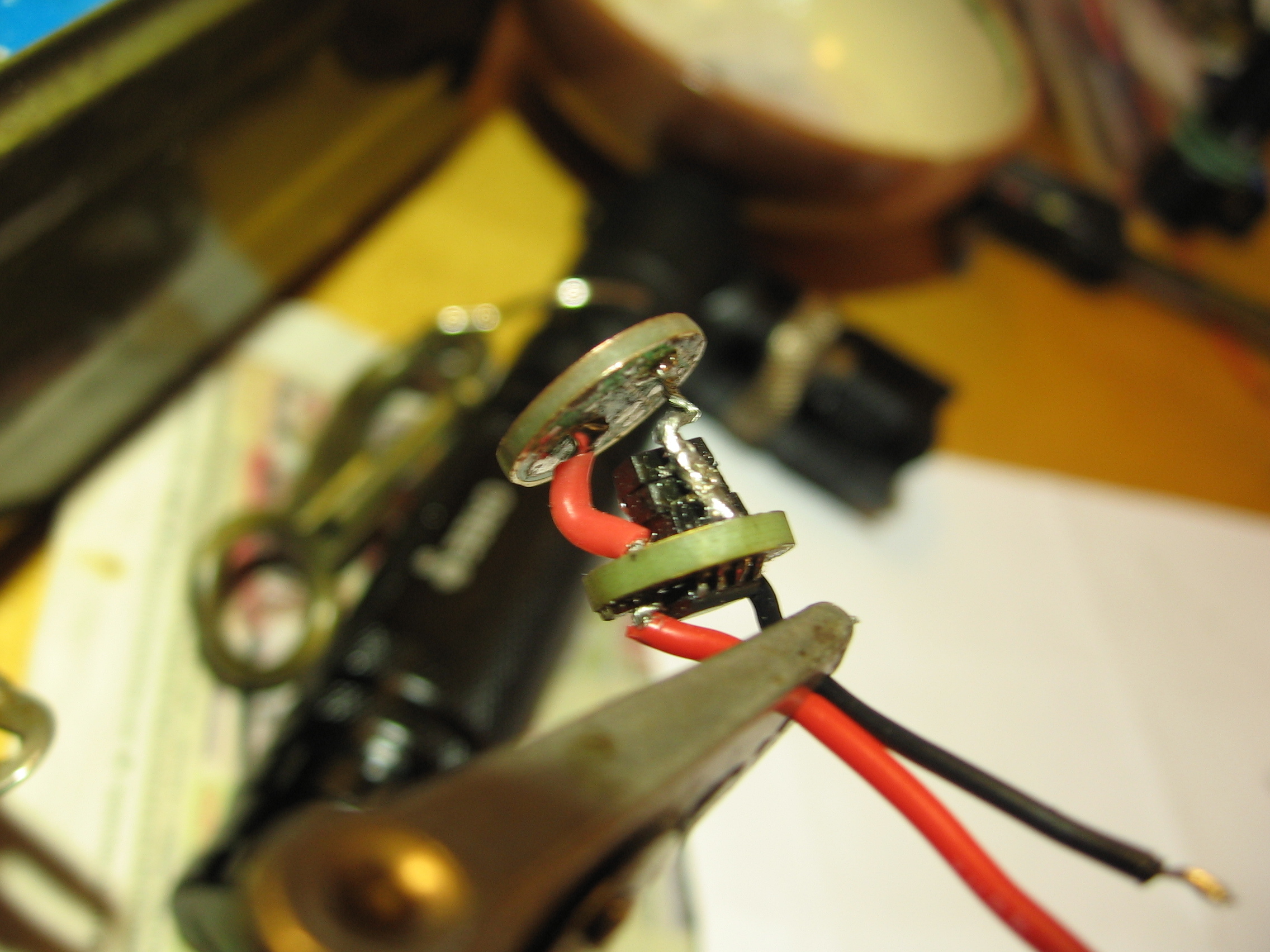

When it was all together, R1 was missing and it always warned low voltage. I took one off a broken driver, and after a week of interruption got it working. Have not tested low voltage warning.
It draws 1.08 A on a fully charged cell, with out of regulation maybe at 3.8 or 3.9 V.
The “3W” after the logo is now accurate.
Just gets better and better!
 The twisty is still the brightest.
The twisty is still the brightest.
Quite a struggle, but you got it working, thanks for the write-up and the pictures of both the failures and the successes :-)
Haven't visited this thread for some time now. A lot has happened. What I like about this thread is that it's more about the journey than the destination.
So the plastic reflector partially melted? If yes, do you think it was because of the heat from the emitter or from a short across the metalized finish of the reflector?
Thanks, yes it is sort of development notes, and self teaching notes. I had never tried tin solder before. I have has some shorts that I have not mentioned. I feel I am to some extent leading the way though. Flashlights will continue to get smaller, brighter and cheaper. I don’t recall seeing AAA size lights with currents over an ampere elsewhere. Maybe there are some that I have not noticed because they are expensive.
I think it was the heat from the LED that melted the base of the relector. The reflector was filed at the bottom so only the edge could have contacted, I think it is too thin to conduct enough to make much heat at that voltage, I think it would have burned the coating off rather than melted the plastic, it happened only when it was left on for a while and only to the one that draws the most current. I might have to put heat insulating spacers in the others, but maybe it is only a problem for that one with no driver, no switch, an XM-L2 and hardly any springs.
